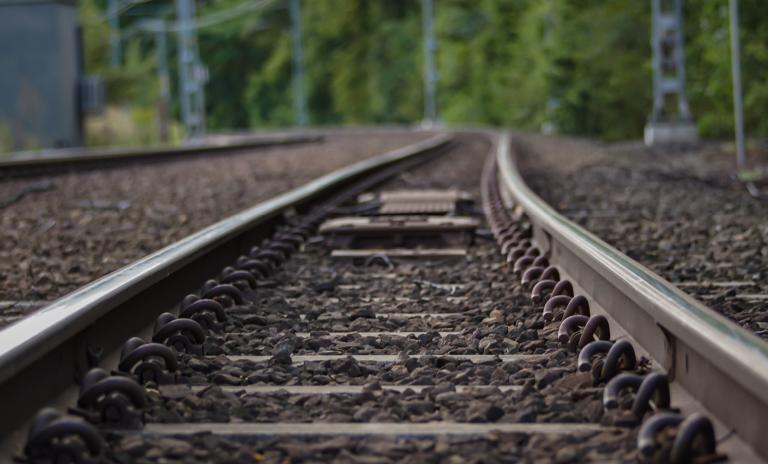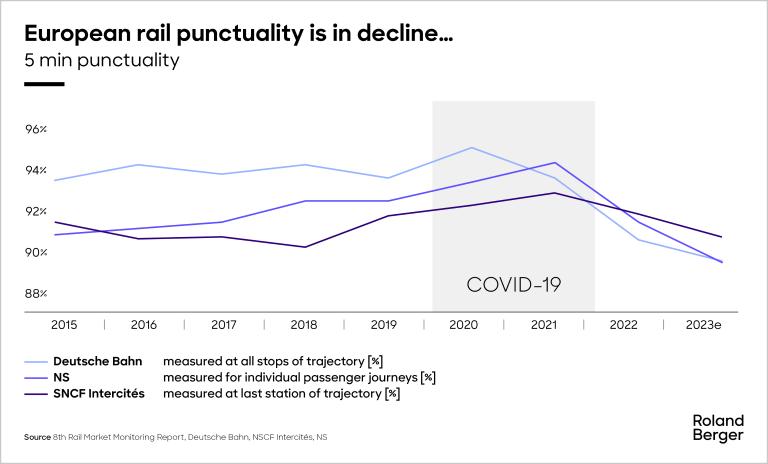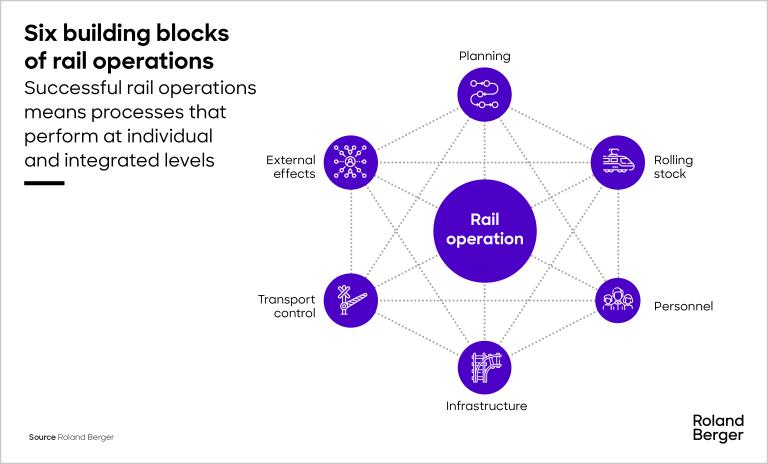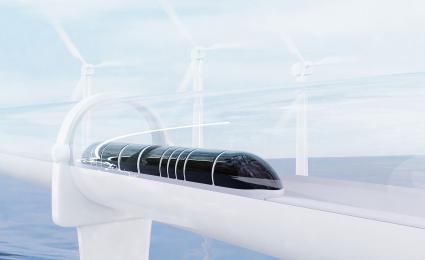Hyperloop is an environmentally clean mode of high-speed transportation. So why is it still struggling to make headway – and how can we give it new momentum?


The changing landscape of rail travel
Navigating the railway operational performance challenge in 2024 and beyond
The rail industry faces a critical challenge: accommodating increasing passenger numbers while maintaining competitiveness and reliability. A robust European rail system could provide a viable alternative to short-haul flights, reducing emissions and supporting the EU's goal of achieving net zero emissions by 2050. Efficient international rail connections play a key role in achieving the objectives of European Regional Policy, including job creation, competitiveness enhancement, economic growth, and sustainable development. However, European rail networks must address numerous operational challenges to achieve these goals. In this article, we examine these challenges and propose a blueprint for an operational performance program to enhance rail services.

The changing landscape of rail travel
The landscape of rail travel is undergoing scrutiny as operational performance of rail lines struggles to match alternative modes of travel . Despite a rising demand for mobility, Europe’s rail market share is below 7% and has not increased since 2000. The COVID-19 pandemic has further complicated matters, altering rail travel dynamics with uneven and unpredictable demand (Fig. 1).
Europe aims to double international high-speed rail by 2030 and triple it by 2050. However, meeting this goal faces significant challenges: only around 75% of the required traffic growth by 2030 can be met by existing or planned high-speed rail infrastructure. This underscores the pressing need for investments, strategic planning and operational performance improvements to bridge this infrastructure gap and enhance rail competitiveness. As passengers return to trains for efficient, dependable and sustainable transportation, the rail industry must address these challenges to adapt to the evolving landscape of rail travel.
Challenges across European railways
Although individual European railways each face region-specific challenges, they are confronted with several common operational challenges, such as shown in Fig. 3. While Fig. 3 highlights three countries, the decline is generally applicable to all European rail lines. There are four main operational challenges, which we discuss below.

Key operational performance challenges
There are four challenges that European rail operators will need to overcome in order increase the attractiveness of rail.
1. Unpredictable demand: The challenge of unpredictable passenger demand reverberates throughout the operational landscape of the rail industry. From short-term scheduling to long-term investments, the entire framework depends on accurate predictions. The essence lies in enhancing predictive accuracy and seamlessly incorporating these insights across all operations—a critical pursuit for the sustained success of rail services.
2. High-maintenance railway infrastructure: The aging and high-maintenance nature of railway infrastructure pose a significant hurdle to increasing ridership, as down-time due to maintenance is detrimental to reliability of the service and directly impacts financial performance. Addressing this challenge requires long-term planning and strategic investment in infrastructure maintenance and modernization.
3. Shortages of qualified labor: The industry faces a shortage of qualified labor, affecting both the operational workforce and skilled personnel responsible for maintaining and managing the railway assets. Strategies for long-term workforce planning, enticements and education are imperative.
4. Complex cross-functional operations: Increasing complexity of cross-functional operations, involving coordination between planning, rolling stock management, personnel, infrastructure, and transport control, increases likelihood of complications. Swift response to disruption becomes more difficult without seamless integration across all functions, which is essential for successful rail operations.
The six building blocks of rail operation
To overcome the operational performance challenges and be successful in rail operations, all processes or “building blocks” should perform optimally both on individual and integrated levels. This is because the six building blocks (planning, rolling stock, personnel, infrastructure, transport control, and external effects) are inherently connected: decisions in one building block almost always have implications on other blocks (Fig. 3). Thereafter, we discuss a selection of points to consider for each building block.
Planning: Craft networks to prioritize customer satisfaction and operational efficiency; strategically coordinate rolling stock, personnel, and infrastructure; ensure planning is agile and adaptable to meet travelers' needs cost-effectively while striking a balance between personalized experiences and economic viability.
Rolling stock: Ensure effective asset management beyond procurement, focusing on cleaning, short-term maintenance, and continual availability; prioritize digitalization, which requires timely management of qualified engineers, as this highlights the crucial intersection of technological advancement and workforce planning.
Personnel: Stress the importance of long-term planning, education and efficiency among staff; address personnel shortages and inflation impact strategically to ensure a sustainable and cost-effective rail operation in the long term.
Infrastructure: Make timely investments to rail infrastructure – tracks, switches and energy networks – to rejuvenate and fortify it; emphasize the role of proactive maintenance to ensure the reliability of a robust network in the long term.
Transport control: Execute plans with available assets, navigating complexities smoothly and adaptively responding to disruptions for operational precision; address challenges of increasing digitalization and non-integrated systems, streamlining and integrating digital systems for efficient transport control.
External effects: Minimize external influences through vigilant monitoring and adaptation; ensure enhanced robustness of the system through measures to mitigate effects of climate change; proactively implement resilient infrastructure, advanced weather forecasting and contingency plans to respond to travel trends and commit to operational stability.
Operational performance program for successful rail operations
In the dynamic landscape of rail travel and amidst the operational challenges faced by the EU rail sector, a robust operational performance program that considers all six building blocks is essential. Three key pillars underpin this program, each intricately linked to the integral functioning of operational processes and integrated functioning with constituent parts:
1. Steer operations integrally through directors of the individual building blocks and align and weigh impact of decisions on entire operation, aside from isolated impacts.
2. Exchange knowledge and insights between operational steering and the multidisciplinary (local) teams, fostering a continuous cycle of learning that drives operational improvement.
3. Implement a comprehensive strategy for digitalization initiatives. This will ensure a holistic optimization of the entire operation, enhancing prediction accuracy, planning capabilities and overall efficiency.
Conclusion
As the railway industry seeks sustainable improvements in operational performance, an operational performance program addressing the interconnected six building blocks is essential. Despite the complexities posed by varied organizational structures, a collaborative effort and strategic partnerships are key to overcoming operational challenges. By focusing on the blocks of planning, rolling stock, personnel, infrastructure, transport control, and external effects, railways can pave the way for a future where operational excellence is synonymous with rail travel.
From decades of operational excellence, including extensive experience in the rail sector and performance programs, our team at Roland Berger has developed a sophisticated toolset that conducts a deep diagnosis of rail systems in just weeks. Through numerous operational performance projects, we have successfully applied these diagnoses, bringing about tangible improvements to rail systems. We stand ready to support operational excellence in the rail sector.
Stay tuned for our next article, where we will dive deep into the sustainability challenges within the rail industry, exploring innovative solutions and strategies for a more environmentally conscious and efficient future in rail travel.










_person_144.png)


